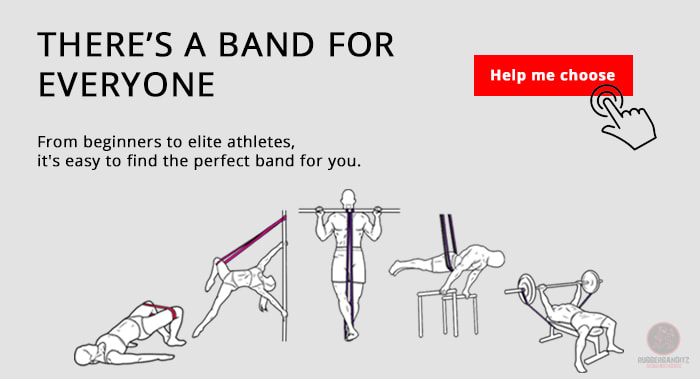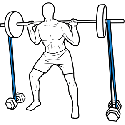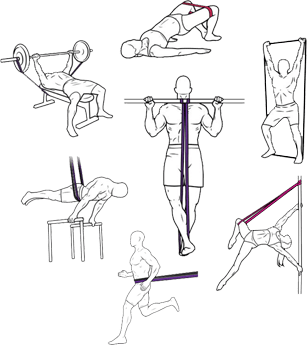Is it safe to exercise intensely with coronary artery disease or even after overcoming a severe heart condition? Doctors say that patients usually fear abusing their weakened hearts so much that they give up exercising and live timidly inactive lives.
Well, the days of experts recommending lifetime convalescence and bed rest for coronary problems are long gone. Rather, medics approve regular brisk exercises for people with heart diseases. But it must be the proper exercise.
For a little help, below are three types of exercise that may benefit those living with heart conditions.
Flexibility Workouts
Stretching and balancing are common examples of a flexibility workout. Although they don’t directly promote heart health, flexibility workouts contribute to musculoskeletal health, enabling you to stay free from muscular issues like cramping and joint pain.
Keep in mind that flexibility is an important part of being able to do other types of exercises. As such, if you have an adept musculoskeletal foundation, you can do other fitness activities that improve heart health.
Additionally, flexibility workouts help maintain stability and stop falls from happening, which can whip up injuries that restrict other types of exercises. Experts recommend doing these workouts before and after another exercise every day.
Also, ask for basic stretch recommendations from your doctor that you can do at home. Or, you can look for YouTube videos to follow, but check with your doctor if you are worried about the exercise’s intensity.
When stretching, don’t hold your breath. Keep your breathing steady and smooth. Also, make sure not to stretch too much so that you won’t feel pain. Avoid any jerking or bouncing movements as well to avoid any injuries. Additionally, don’t rush. Hold the stretch for at least 30 seconds before moving on to another exercise.
Strength Training
Strength training, also known as resistance training, is another type of workout that benefits your heart. The main rewards of this type of exercise have been seen as musculoskeletal, and it’s been particularly recommended for older adults to prevent falls and maintain bone mass.
However, recent research and studies show that resistance training lowers your heart disease, stroke, and diabetes risk. For example, according to a study in 2019 published in Medicine and Science in Sports and Exercise (which included at least 13,000 people), strength training was correlated with decreased heart disease, including stroke and heart attack.
In particular, those who performed resistance training for at least one hour per week were connected with about 40% to 70% decreased risk of heart disease. Moreover, resistance training has an outright impact on body composition.
With that said, those who carry lots of body fat (a significant risk factor for coronary disease) can benefit from this type of workout because it can help generate leaner muscle mass and reduce body fat.
A great strength training example is working out with free weights on weight machines or with resistance bands. Also, you can perform body-resistance exercises such as chin-ups, squats, and push-ups.
According to the American College of Sports Medicine, performing resistance training at least two days per week (non-consecutive) would be best. First, do a few sets of strength exercises, and then let your muscles rest for at least one day between sessions.
A good approach is to start slow and build up gradually. And eventually, you can make your strength training tougher or longer. During your workout, you should be able to talk. Otherwise, the exercise might be too extreme for you. Have your medications ready at all times. If not, you can buy online with prescription discount coupons at Buzzrx.com.
Cardio Exercise
Cardio exercise, also known as aerobic exercise, uses the large muscle groups’ repetitive contraction to get your heart beating more rapidly. As a result, you breathe more deeply, and you sweat. When these muscles are used in exercising, there’s an elevated rate of respiration to concoct energy.
As a result, the need for more oxygen causes increased heart rate and breathing, which trains your body to move blood and oxygen to your muscles more efficiently.
Regular aerobic workouts can do the following:
- Lower your cholesterol and blood pressure.
- Strengthen your blood vessels and heart.
- Reduce your risk for stroke, Alzheimer’s disease, and heart disease.
- Improve blood flow.
Moreover, you can do these cardio exercises if your doctor approves:
- Row
- Skate
- Ski
- Jump rope
- Jog
- Playing tennis
- Walking
- Golfing
- Kickboxing
- Circuit training
- Canoeing, paddling, or kayaking
Experts recommend performing cardio exercises at least thirty minutes a day, five days a week. Moreover, the most commonly used machines for aerobic exercise include treadmills, stair climbers, stationary cycles, and more.
Takeaway
The most effective tool for having good heart health is being physically active. It helps strengthen the heart muscle, ward off high blood pressure, artery damage, and keep your weight under control.
However, various exercises are indeed required to yield complete fitness. The most important workouts for heart health are strength training and aerobic exercise. However, flexibility is nevertheless crucial as it provides a solid foundation for performing exercises more effectively.




